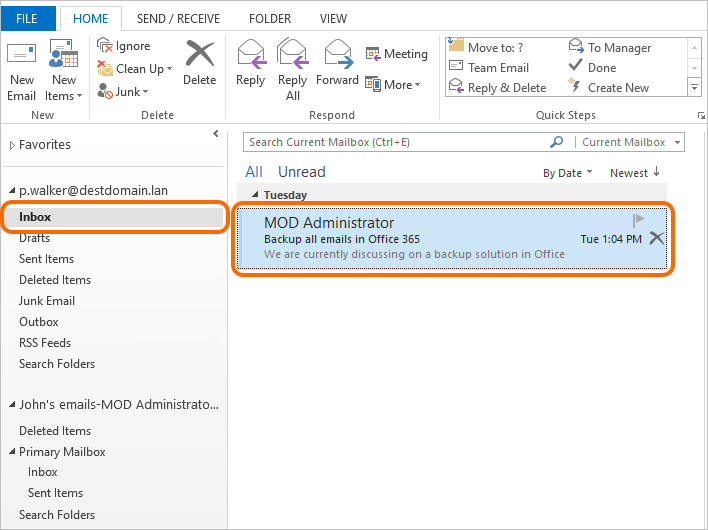

- #Delete outlook personal folders inbox how to#
- #Delete outlook personal folders inbox archive#
- #Delete outlook personal folders inbox free#
- #Delete outlook personal folders inbox windows#
Outlook Rules with features that become active once that button is active. To do that, you will use either Quick Steps or Is to have policies applied automatically
How do you apply them? Well, one way is to select one or more emails, and then use that Apply Policy button and menu to manually apply such policies to the selected email.ĭon’t worry, you didn’t waste your time finding orĪctivating that Assign Policy button, because it IS the first step-it isīut using that button is way too much work. You applied the policy, so keep that in mind. Time period is measured from the Received date of the mail, not from the day Mail, the mail will auto delete after the time-period expires.
#Delete outlook personal folders inbox how to#
If you are missing the Delete policies, or you want to add some more choices, say a 3-day or 1-day delete, both of which are useful, the new Inbox Ninja video lesson number 8.3 shows you how to do that. Your list might have more or less to choose from than shown here, but if you’ve got the Delete policies I show above, then you are all set. Default Exchange retention policies usuallyĭisplay the choices shown in the following figure. If you have your own Officeģ65 subscription with Exchange, and you administer your own Exchange account, I’veĪdded a video to the Ninja course that may help you add that button, it’s LessonĪssuming you have that Assign Policy button active, next we If you cannot see it, well, you’ll have to talk with your ExchangeĪdmin staff and ask them to activate it for you. If you can see the Assign Policy button, great! You are part
#Delete outlook personal folders inbox windows#
You should first check in your Windows desktop Outlook to see if the personal retention Here is the first step to using these retention policies. I’ve also added three more new lessons to the paid set that expand on this and they are mentioned below.
#Delete outlook personal folders inbox free#
(Lesson 1.11) that shows visually what I present in words below, and it’s free Set, I’ve just added a brand-new video lesson to that Ninja set AndĪgain, if you want to go to the Outlook Inbox Ninja video Let me go into a bit more detail on how this works. I can’t tell you how useful this is for automatically clearing It’s especially easy if you combine them with Outlook rules or Quick Steps-it takes just a few seconds to set up first, and then it’s automatic after that. Doing all this is easy using Exchange retention policies. This helps keep my folders clear and means there is less mail I must delete manually. So these days, when I first get them, I apply a retention policy to auto-delete them in a week.
#Delete outlook personal folders inbox archive#
I like to let some of them stay around in my Inbox or Archive folder (often categorized as READ LATER-see Inbox Ninja Lesson 1.6) for about a week or so, just in case I have time to read them.īut after about a week they are old news and useless. Here’s a good example, I get a lot of daily and weekly news-oriented emails.

But if you’d rather read about this instead, read on below.Įxample of Where Personal Retention Policies Make Sense to Use So go to that link now and watch Lesson 1.11. I’ve created 4 new video lessons about this in the Outlook Inbox Ninja Video Course, and the first one is free for all. If they are available to you, these personal retention settings can greatly help you clear your Inbox and help you keep your Inbox or folders free of old mail that you don’t need. But there are some optional and underused “personal” features that might be available for you. It’s got a ton of rather complicated features mostly set by your Exchange Administrator if they choose to use them. Microsoft Exchange includes an elaborate, mostly behind the scenes, facility to automatically delete old mail.


 0 kommentar(er)
0 kommentar(er)
